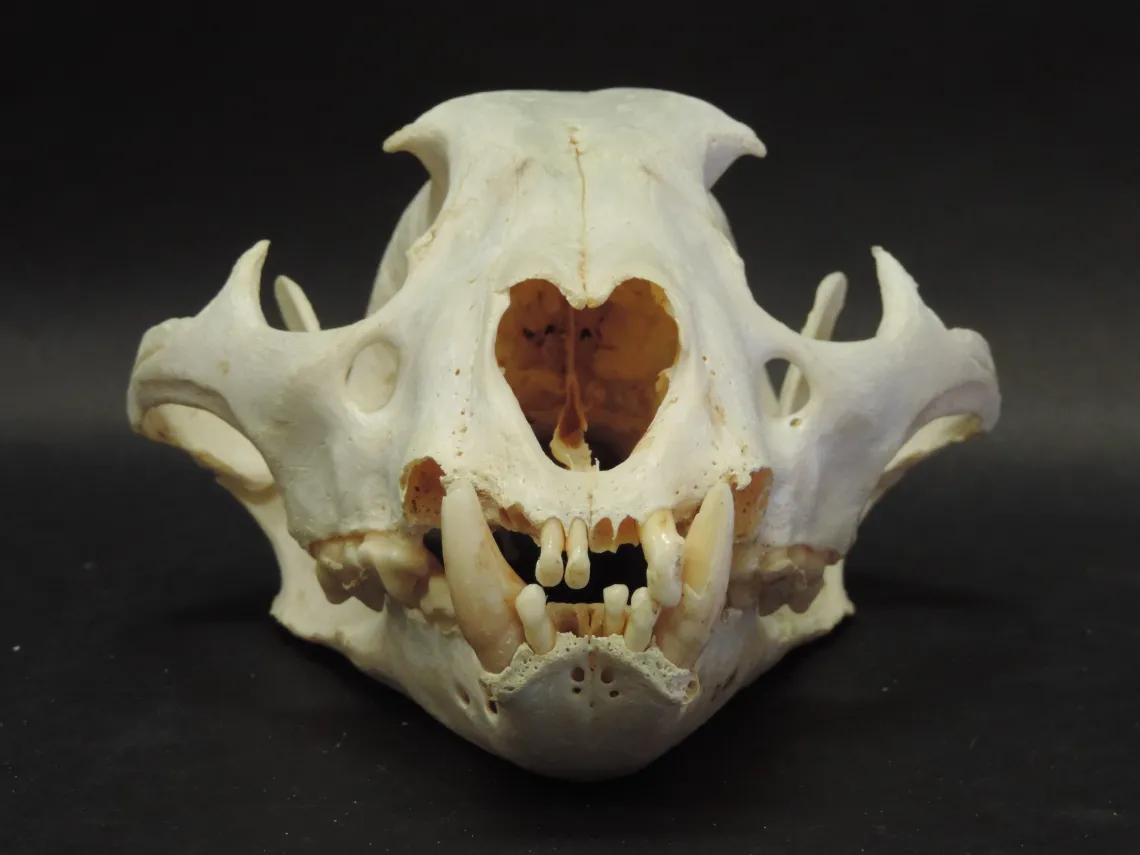
Zooarchaeology, a subfield of archaeology, is the study of animal remains from archaeological contexts.
Zooarchaeologists are interested in the relationships between humans and animals in the past including such topics as human diet, food procurement strategies, domestication of animals, economics and trade, use of animals in ritual contexts, reconstruction of past environments, and site formation processes.
In order to identify the remains of animals (primarily bones and teeth) from archaeological sites, zooarchaeologists use comparative skeletal reference collections, such as are curated in the Arizona State Museum's Stanley J. Olsen Laboratory of Zooarchaeology.
The Olsen Lab houses two modern comparative vertebrate collections with a total of more than 4,000 vertebrate specimens of 600 species (fish, bird, reptile, amphibian, and mammal).
Zooarchaeologists study the genetic and physical changes in animals as a result of domestication (domestication is a multi-generational relationship between humans and certain plants and animals).
The Comparative Vertebrate Collections
The comparative vertebrate collections are reference collections of skeletons of modern, recently deceased “known” animals that we use to identify the archaeological “unknown” fragments. The Western Archaeological and Conservation Center collection is on long-term loan from the National Park Service. This extensive collection specializes in species native to the southwestern United States.
Also housed in the Laboratory is the Stanley J. Olsen Zooarchaeological Collection. Most of these specimens are from the southwestern or southeastern United States, but also includes specimens from other regions of the world. The lab’s collections have recently grown with the addition of donated specimens from the University of Arizona’s Department of Geosciences, and from zooarchaeologist, Ms. Charmion McKusick. A majority of the skeletons in the collections are complete.
The Olsen Laboratory has a small collection of non-circulating text references available for researchers to use when they visit the lab. Many are out-of-print biological and osteological references, and range in publication dates from 1909-2015, and substantially cover the North American Southwest and other parts of North America.
·Zooarchaeologists study human-animal relationships: hunting, ecology, taphonomy, tool use, ritual use, pets, and domestication.
Who Uses the Laboratory?
The Olsen Laboratory is used by students, visiting scholars, and volunteers, as well as for public outreach activities. The collections have been used in countless numbers of University of Arizona courses, as well as undergraduate and graduate student theses, dissertations, and research projects. The laboratory is also a significant source of employment and research opportunities for current graduate and undergraduate students. Visiting researchers include professional zooarchaeologists employed at local cultural resource management companies, as well as faculty and graduate students from other academic institutions.
Use of the collection is not limited to archaeologists; the curator and staff field numerous inquiries from biologists and wildlife managers each year regarding vertebrate species diversity, geographical range, and individual variation in the southwestern region.
·Zooarchaeologists work in museums, universities, federal and state agencies, and cultural resource management firms.
Access to the Collections
Limited workspace is available in the lab for visiting researchers and students during normal business hours (Monday through Friday, 8 a.m. to 5 p.m.). Reservations are required. Persons wishing to use the collections should send a brief letter stating their affiliation, complete contact information, purpose and project title, an estimate of the amount of time needed with the collections, and an up-to-date curriculum vitae to:
Martin H. Welker, Ph.D.
Associate Curator of Zooarchaeology
Arizona State Museum / University of Arizona
P.O. Box 210026
Tucson, AZ 85721-0026
520-626-5579
mwelker@arizona.edu
See Dr. Welker's current research foci
Related Video
The History and National Impact of the Stanley J. Olsen Laboratory of Zooarchaeology
RETURN TO THE TOP OF THIS PAGE





